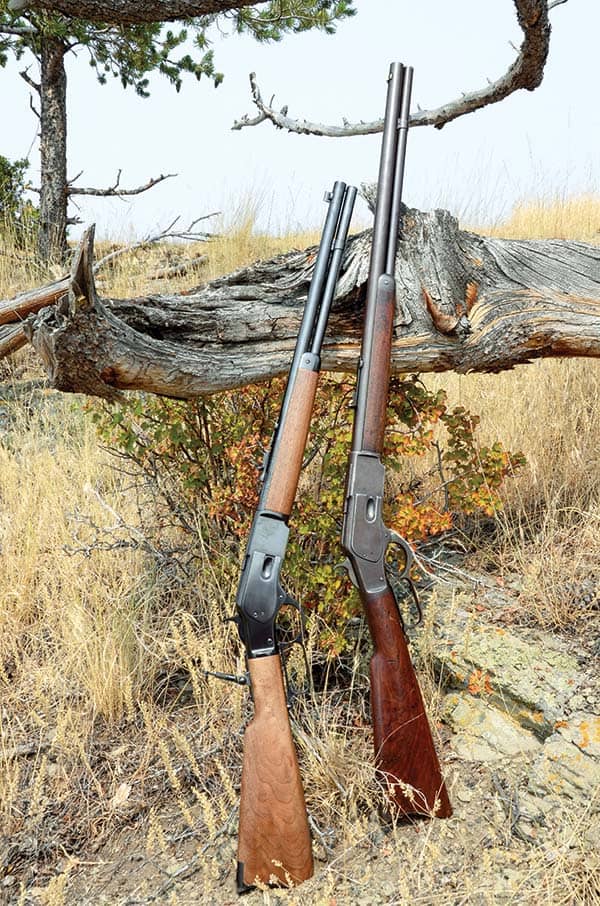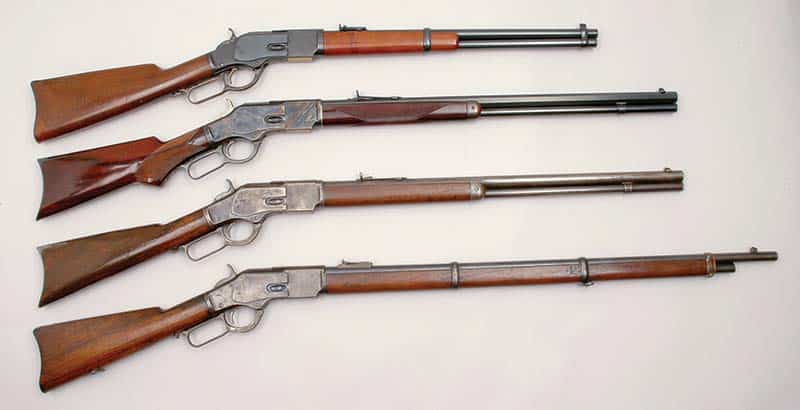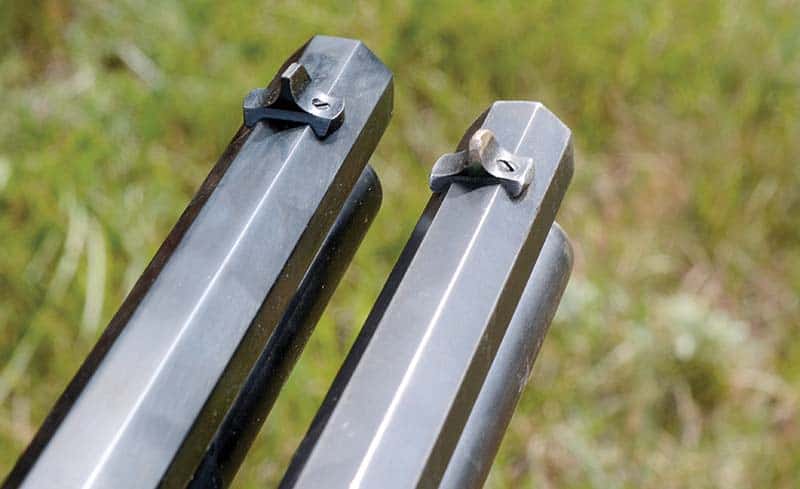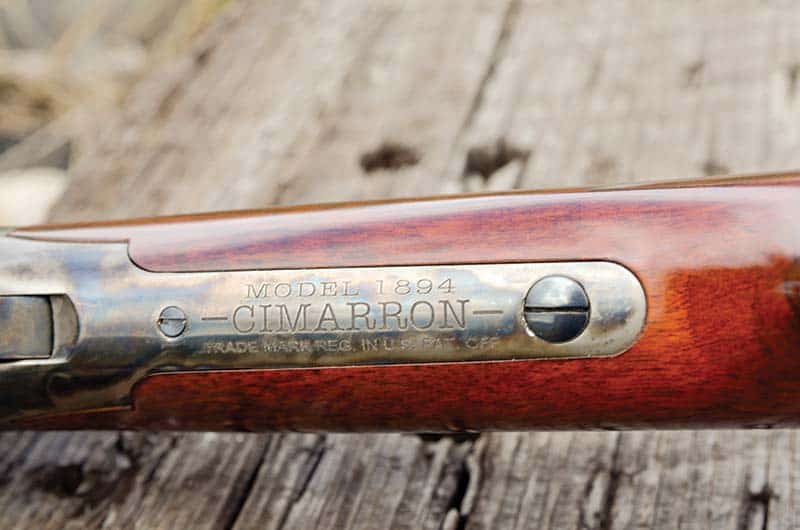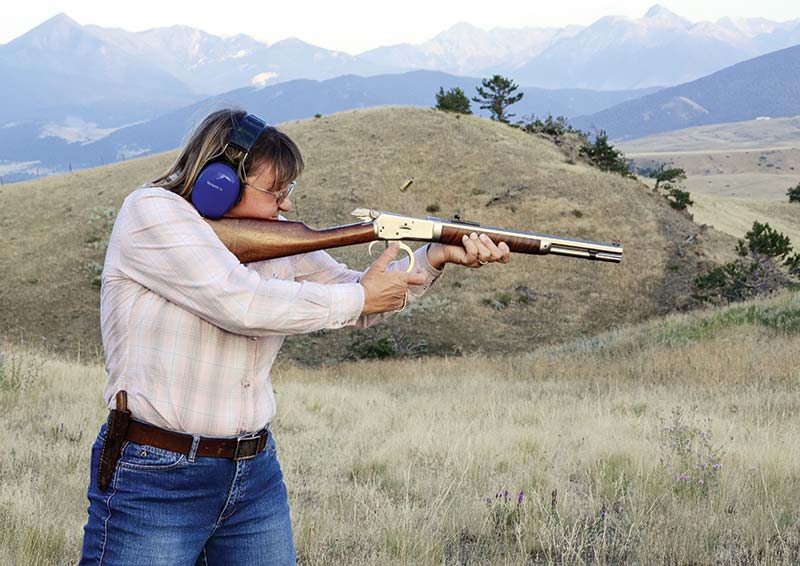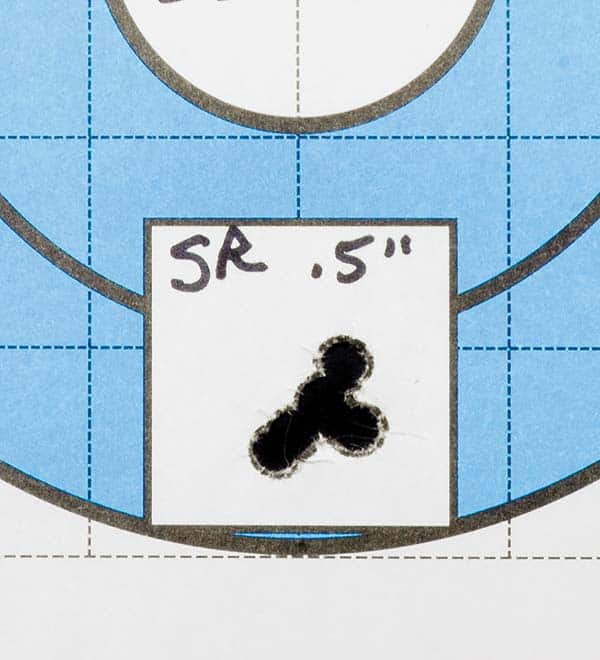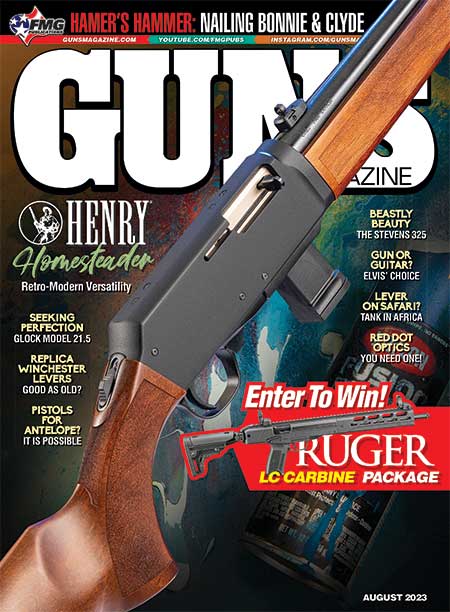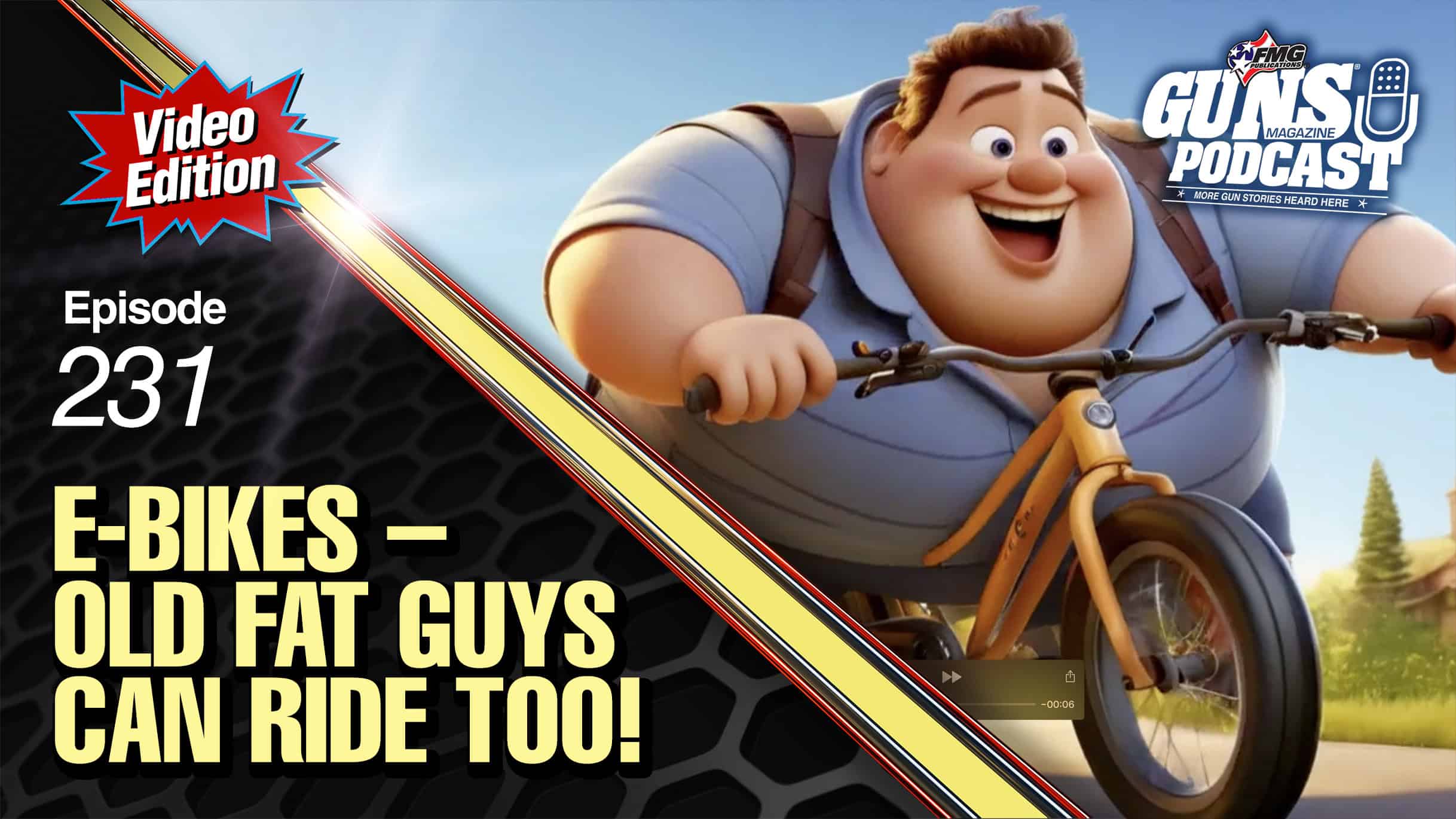Replica Winchester Leverguns
Classics Revisted
Over the years my rifle racks have held scores of original Winchester lever guns. This was especially true when doing the shooting for my book Shooting Lever Guns of the Old West (available on Amazon). They have ranged from .25-20s to the .50-110.
Little by little, all but a dozen of those originals had been sold or traded off. I’ve kept at least one each of Models 1873, 1876, 1886, 1892, 1894 and 1895. With values as they are today, perhaps I would have been smart to hold onto more of them. Prices have climbed to the point the average Joe can’t afford a safe-shooting, decent-condition vintage Winchester.
New And Old
And this brings us to “new” Winchesters as produced by factories in Italy and Japan and to a lesser extent Brazil. Actually, replica Winchester lever guns are not new. Uberti of Italy, as spurred by Val Forgett of Navy Arms Company, began making Winchester copies in the mid-1960s. Val personally told me he started the replica Winchester lever gun ball rolling as a deal with Winchester Repeating Arms to make new Model 1866 rifles commemorating 100 years of lever guns. At the last minute, executives at WRA backed out so Val brought the ’66s into this country himself.
Uberti continues sending lever guns to a variety of importers such as Cimarron Arms, Taylor & Company, Dixie Arms, EMF along with Navy Arms and others. There’s also a relatively new kid on the block named Chiappa. Collectively Italian replica Winchesters have grown to include Model 1873s, 1876s, 1886s, 1892s and 1894s.
In the 1970s Browning Arms Company contracted with Miroku of Japan to reproduce the Model 1892 in .357 and .44 Magnum calibers. They were followed by the Model 1886 .45-70 and Model 1895 .30-06. These were sold under the Browning name and initially the Japanese imports copied only John M. Browning’s designs. Over the years Browning managed to acquire rights to use the trademark so the Miroku replica Winchesters can now carry the world-famous name.
To show just what I know — in my above mentioned “Lever Guns” book — I wrote it was doubtful any company would ever reproduce the Model 1876 Winchester, the company’s first attempt to rival the power of 1870s-era big-bore single-shot rifles on the market. My reasoning was the Model 1876 was pretty much a failure for Winchester in regards to sales. Why would anyone want to duplicate them?
Well, a half dozen years later after my words, Uberti’s factory was sending new versions of the Model 1876 to our shores. Current websites show Uberti producing all four of the vintage Model 1876 chamberings — .40-60, .45-60, .45-75 and .50-95 — for Cimarron Arms.
Thoughts
In my career, I’ve used most of the new Winchester models listed above. Some I’ve owned and others I’ve had for periods of times on consignment or borrowed from friends for one or another shooting project. In regards to pistol-cartridge firing Models 1866, 1872 and 1892, these have been chambered for .32-20, .38 Special, .357 Magnum, .38-40, .44 Special/.44 Magnum, .44-40 and .45 Colt. The rifle-caliber replica Winchesters I’ve experienced have been chambered for .30-30, .30-40, .38-55, .405 Winchester, .45-60, .45-70 and .50-95. I’m listing these to show I’ve personally put quite a bit of lead downrange from new replica Winchester rifles. Mostly my new Winchester shooting was done in competition, in hunting and some just at paper targets for articles.
My opinion of these replica Winchesters is, all-in-all, they are fine rifles and carbines. My current Cimarron/Uberti Model 1873 .32-20 short rifle is capable of putting five rounds under a quarter at 25 yards. When Yvonne saw the new Chiappa Model 1892 .44 Magnum take-down, she said, “I think we need one of those.” When my wife wants any gun, by golly she gets it! I think this little .44 carbine rivals any original ’92 Winchester for quality. By the way, it also functions perfectly and shoots accurately with .44 Specials.
Back in the 1990s, Yvonne and I were avidly shooting cowboy-action events. I’d outfitted her with a brace of .44-40 Colt SAAs and an original Winchester Model 1892 chambered the same. Along the way, she developed a flinch so instead of going the route of loading her .44-40s down to popgun levels, I fitted her with a pair of .38 Special SAAs. Then, for a long gun, I found a Navy Arms Model 1866 saddle-ring carbine .38 Special. Darn if I didn’t grow fond of that little carbine myself but after Yvonne worked herself back to .44-40s, the little .38 wasn’t seeing use so it was sold. I actually used the funds raised from it to help pay for my World War II full-auto affliction.
In the last few years I’ve been privileged to have had on consignment several new Miroku Model 1873 leverguns. One was a .38 Special/.357 Magnum saddle-ring carbine and the other was a Short Rifle (20″ barrel instead of 24″) .44-40. Both were very slick functioning lever guns right out of the box. The .38/.357 quickly showed it was capable of fine precision. I had to work with the .44-40 just a mite. It didn’t want to shoot my lead bullet handloads very well. Habitually I load them with home-cast bullets of 0.428″. Slugging the Miroku ’73 barrel showed it to have 0.429″ groove diameter — the same as common for .44 Magnum. Putting lead-alloy 0.429″ bullets in my .44-40 handloads solved this problem.
On The Hunt
So far, I’ve discussed only the pistol-cartridge replica Winchesters and I admit to favoring them. However, the rifle-caliber replica Winchesters have as much going for them as hunting rifles. The two most powerful with which I’ve spent shooting time were a Model 1895 .405 Winchester and a Cimarron Arms Model 1876 .50-95. I also have an original Winchester .405 that has never been especially accurate. At best I’ve gotten from it about a 4″ 100-yard group. The new Winchester/Miroku .405 right out of its box gave groups about half that size with Hornady 300-grain factory ammo. Be prepared — you should also buy a shoulder pad. Recoil of .405 Winchester is “noticeable.”
Another new replica Winchester delivering substantial recoil is the Cimarron/Uberti Model 1876 .50-95. Its steel crescent-shaped butt plate will plain bruise an unpadded shoulder when fired with a 350-grain lead-alloy bullet over 85 grains of Swiss 1 ½ Fg black powder. I know!
The newest Cimarron/Uberti Winchester I’ve been entitled to test fire was a Model 1894 .38-55. As with the .405, I also have a vintage Winchester 1894 in the same caliber. I must say the Uberti people did a fine job. My original was made in 1897 and the Uberti replica duplicates it down to tiny details. They also make new ’94s in the legendary .30-30 caliber.
For those interested in shooting guns of the Old West, I urge you to give the new Winchester replicas a close look. Whether coming here from across the Atlantic or Pacific, in my experienced estimation they are fine lever guns.
